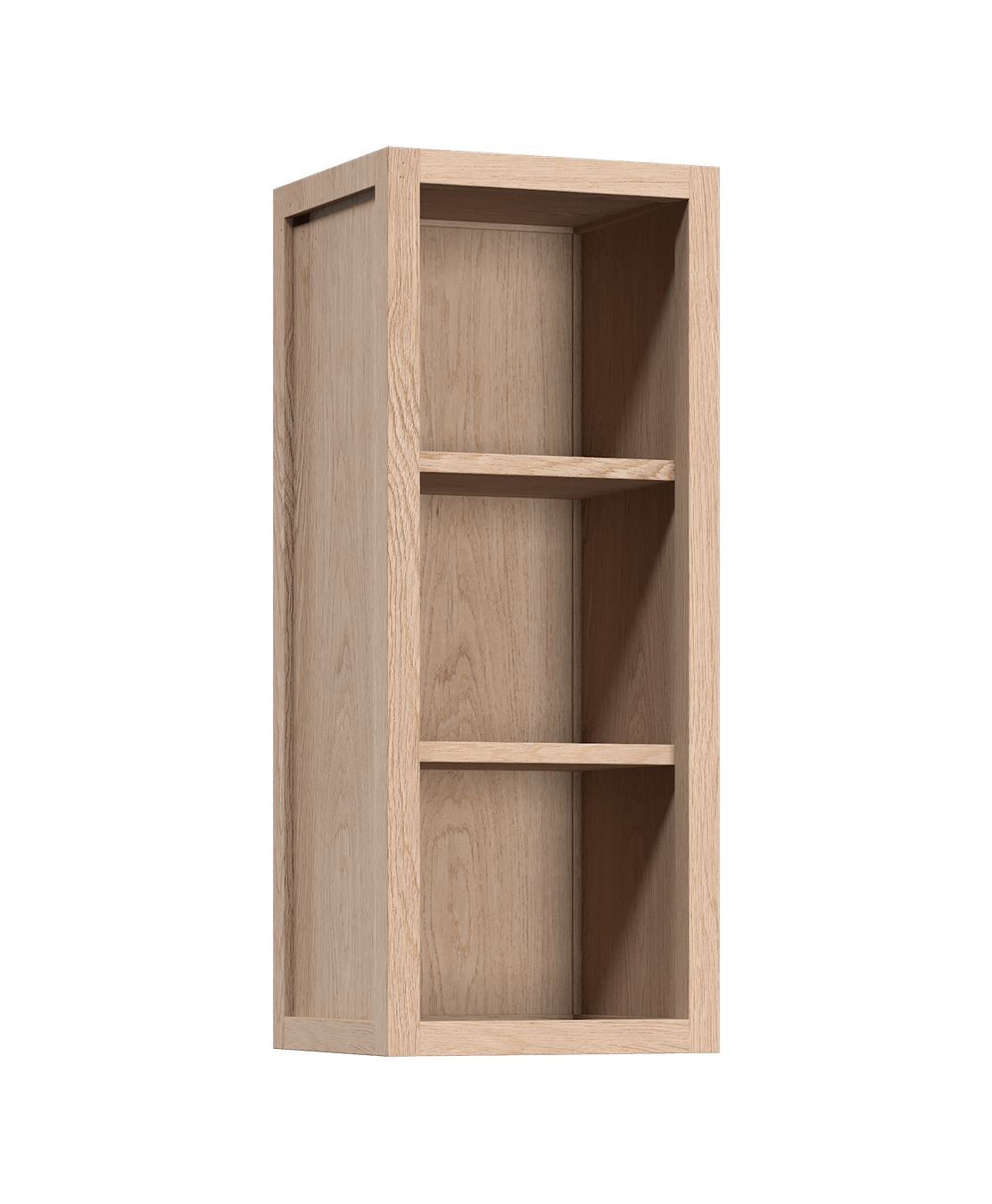When it comes to designing a kitchen, it often feels like wall cabinets are a must. However, a trend is gaining momentum in the world of kitchen design: “low” kitchens, which aim to eliminate upper cabinets in favour of lower cabinets. But why choose a low kitchen? Keep reading to find out!
A minimalist kitchen backsplash = more creativity!
Low kitchens leave more room on the walls for creative decorative elements. In fact, eliminating wall cabinets opens up a whole world of possibilities—whether you want to create an accent wall with tiles or wallpaper, or make wooden shelves, a painting or an industrial-style kitchen hood the stars of the show. Removing wall cabinets also allows you to highlight unusual decorative pieces like counter lamps, artwork, wall-mounted faucets, hanging lamps, and plants. Plus, it’s a great option for kitchens installed under windows, which leave little to no room for wall cabinets.
Since we love the concept of low kitchens, we’ve created a kitchen utility rail that can be used to hang your favourite kitchen essentials. This rail will be available on our website very soon, so don’t forget to subscribe to our social media and newsletter to be notified of the launch!

Radix kitchen cabinets in white oak. Photo credit: Mélanie Elliott.

Radix cabinets, Braccas island and Volitare display cabinet in black stained oak. Photo credit: Matthew Williams.
Create a separate pantry
With the trend of low kitchens, the mantra “less is more” takes on its full meaning. Despite what many people think, fewer cabinets does not necessarily mean less storage. A well-planned low kitchen shouldn’t be viewed as a nuisance, but rather as an opportunity to reinvent your space by thinking outside the box of traditional kitchens.
Worried that a low kitchen will limit you storage-wise? If so, we recommend adding a piece of furniture in one of the rooms adjacent to the kitchen—such as the dining room or the living room—which will serve both as additional storage and as a complementary decorative element. Composed of four shelves, a drawer and two glass doors, the Volitare display cabinet makes for a perfect pantry. We like to store our wine and cocktail glasses in a Volitare display cabinet placed in the living room, and our special occasion dinnerware in a Volitare base cabinet placed in the dining room (combine two to create a buffet-style cabinet).
If you’re not ready to ditch your upper cabinets entirely, we suggest adding a wall cabinet above your sink. Check out our two wall cabinets (the Radix open wall cabinet and the Radix wall cabinet with glass doors), which are ideal for adding storage to your room without taking up too much space on your walls.

Photo credit: Reform.

Radix kitchen cabinets in black stained oak. Photo credit: Rick O’Brien.
Extra storage & wall cabinet options
Shelves or drawers? It’s all a matter of habit!
Although most of us are used to storing our glasses and plates in upper cabinets, lower cabinets with drawers can serve the same function. Simply add a non-slip mat to the bottom of the drawers to prevent any movement when opening and closing the drawers.


Photo credit: Jersey Ice Cream Co.
An ergonomic solution
When you eliminate upper cabinets, it’s easier to keep everything close at hand. Plus, you will no longer need to lift your arms or climb on the countertops to reach the tallest shelves. Children will also have easier access to glasses, plates, and their favourite snacks. It’s a win-win for everyone!
Want to recreate this trend in your kitchen? Don’t hesitate to contact our team! Our modular specialists will be happy to assist you in the realization of your project and to offer you solutions adapted to your space (3D render included).



